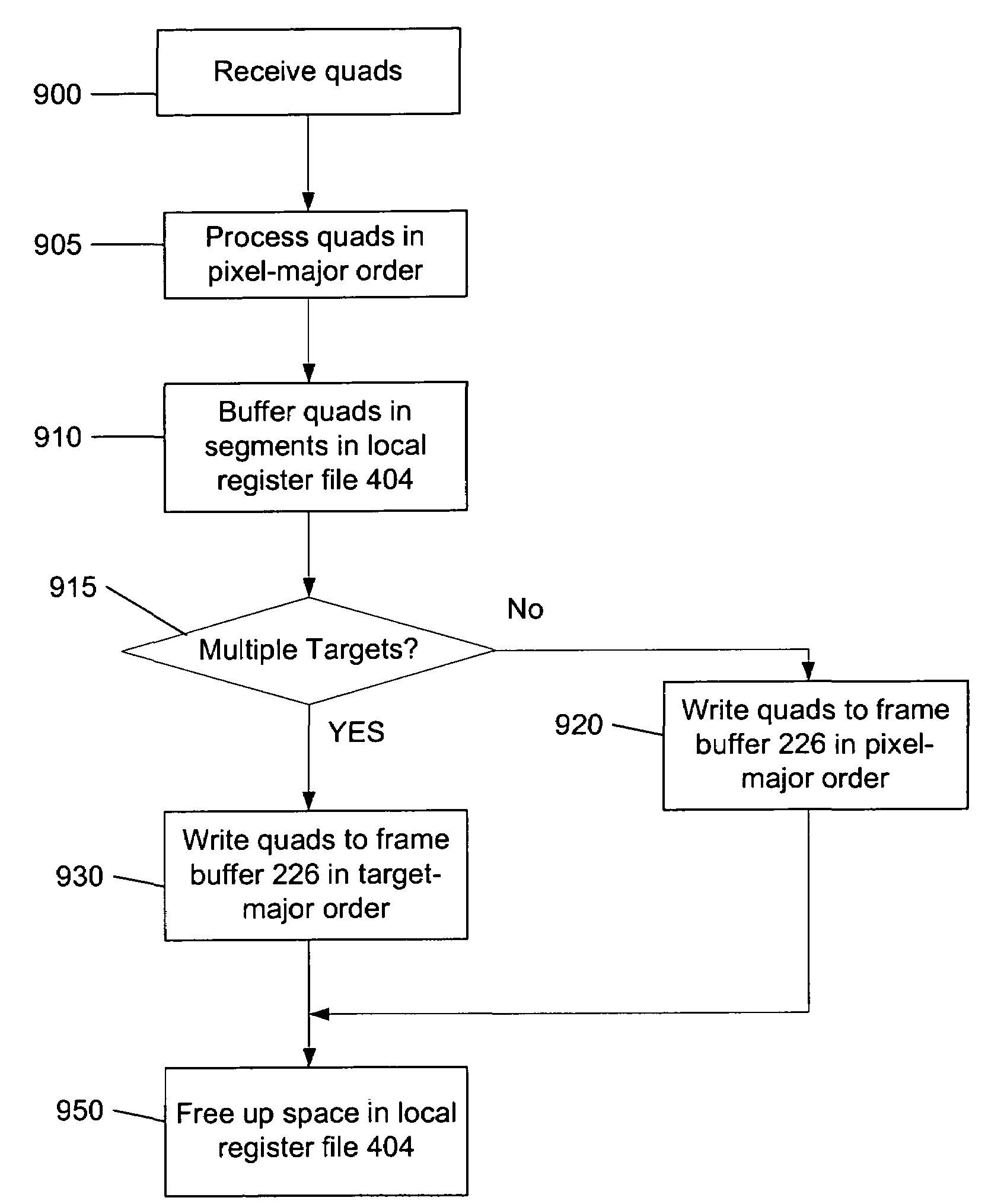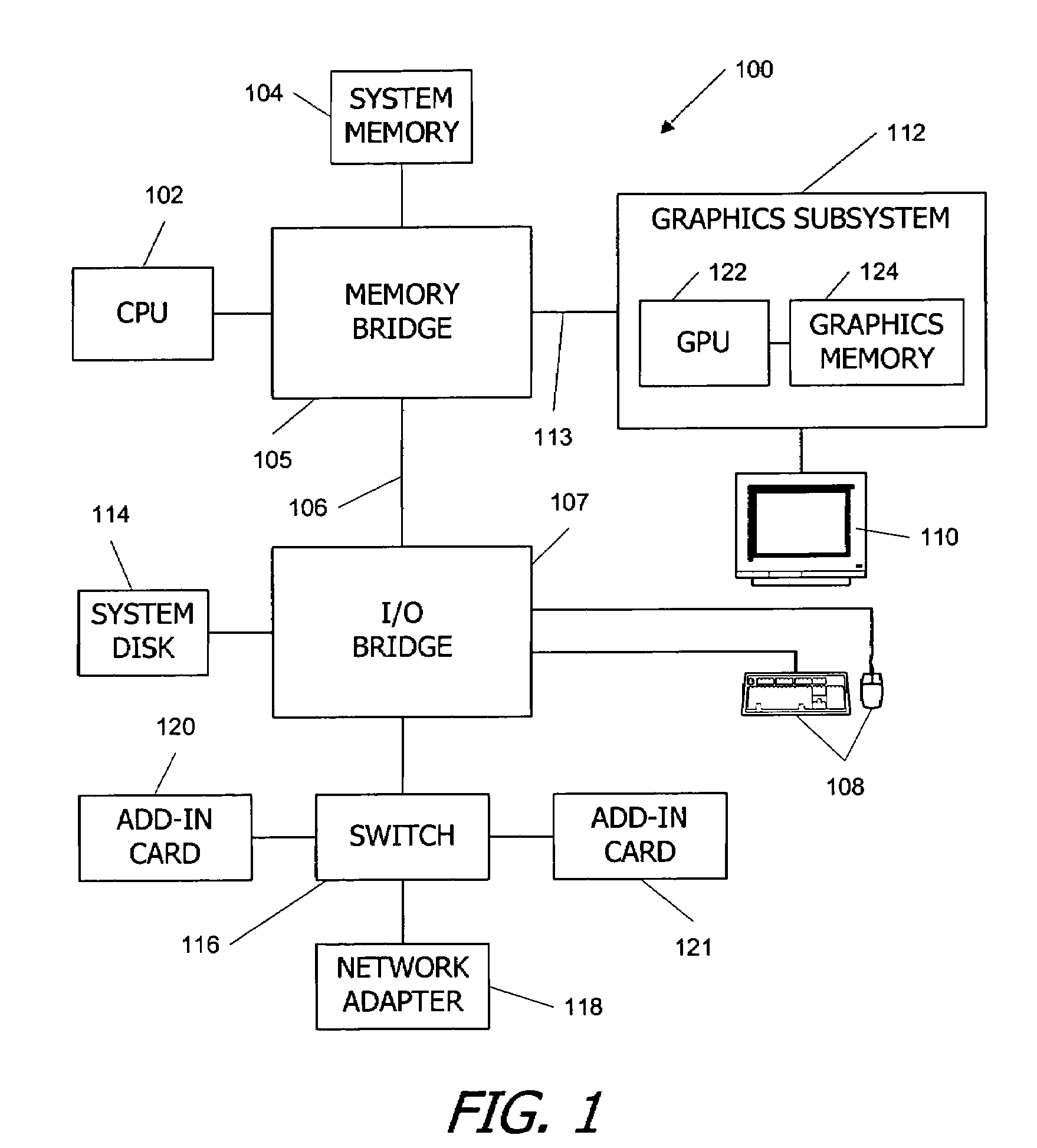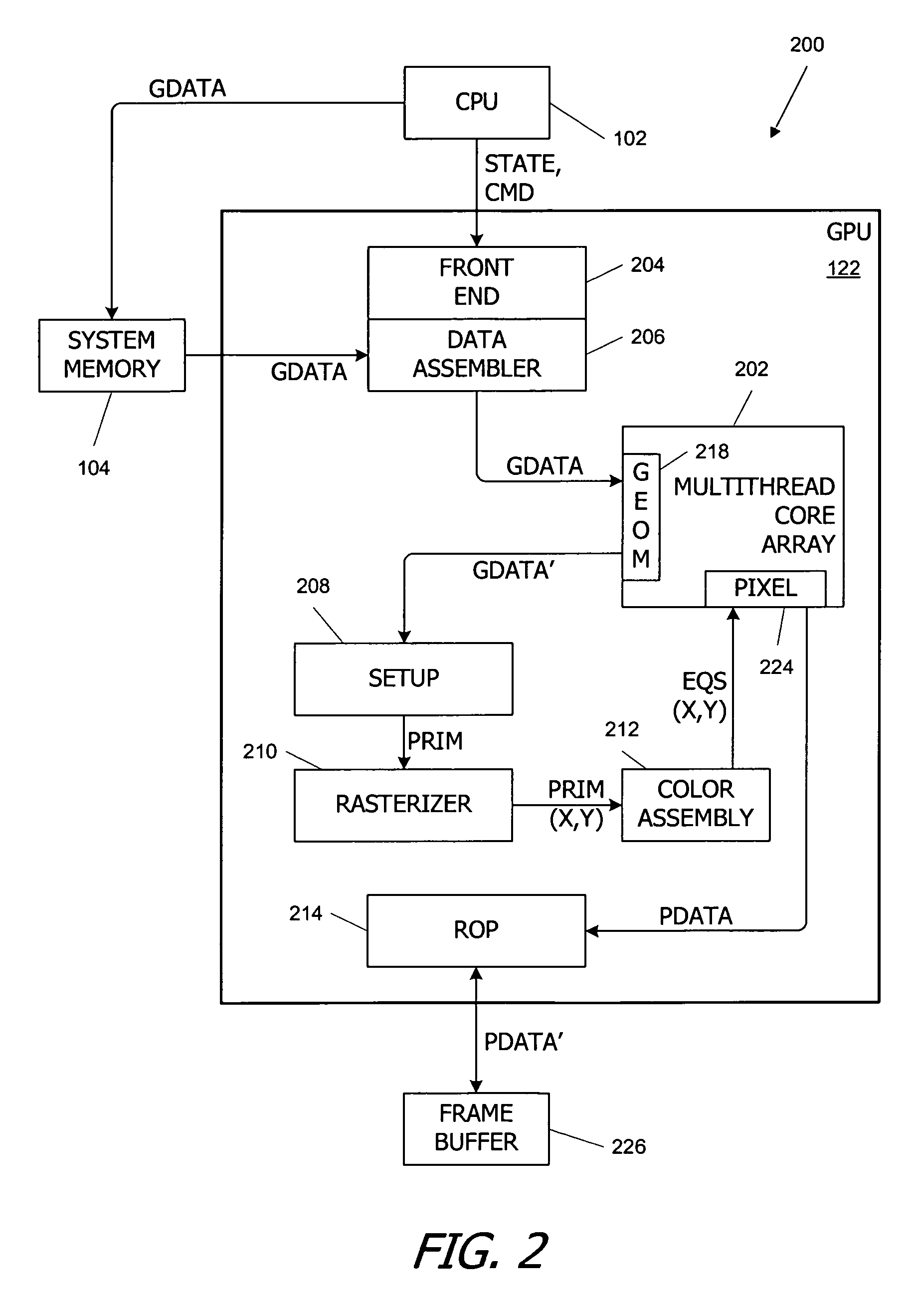Coherent shader output for multiple targets
a shader output and shader technology, applied in the field of graphics processors, can solve the problems of lack of coherence, reducing so as to reduce the overall efficiency of the gpu, the overhead of opening and closing dram pages, and the cost of accessing the dram pag
- Summary
- Abstract
- Description
- Claims
- Application Information
AI Technical Summary
Benefits of technology
Problems solved by technology
Method used
Image
Examples
Embodiment Construction
System Overview
[0024]FIG. 1 is a block diagram of a computer system 100 according to an embodiment of the present invention. Computer system 100 is merely exemplary, and a number of alterations may be made to computer system 100. Computer system 100 includes a central processing unit (CPU) or control processor 102 and a system memory 104 communicating via a communications path that includes a memory bridge 105. Memory bridge 105 (e.g. a Northbridge chip) is connected via a communication path 106 (e.g., a point-to-point connection using the HyperTransport protocol) to an I / O (input / output) bridge 107. I / O bridge 107 (e.g. a Southbridge chip) receives user input from one or more user input devices 108 (e.g., keyboard, mouse) and forwards the input to CPU 102 via communication path 106 and memory bridge 105. Visual output is provided on a pixel based display device 110 (e.g., a CRT or LCD based monitor) operating under control of a graphics subsystem 112 coupled to memory bridge 105 vi...
PUM
 Login to View More
Login to View More Abstract
Description
Claims
Application Information
 Login to View More
Login to View More - R&D
- Intellectual Property
- Life Sciences
- Materials
- Tech Scout
- Unparalleled Data Quality
- Higher Quality Content
- 60% Fewer Hallucinations
Browse by: Latest US Patents, China's latest patents, Technical Efficacy Thesaurus, Application Domain, Technology Topic, Popular Technical Reports.
© 2025 PatSnap. All rights reserved.Legal|Privacy policy|Modern Slavery Act Transparency Statement|Sitemap|About US| Contact US: help@patsnap.com



